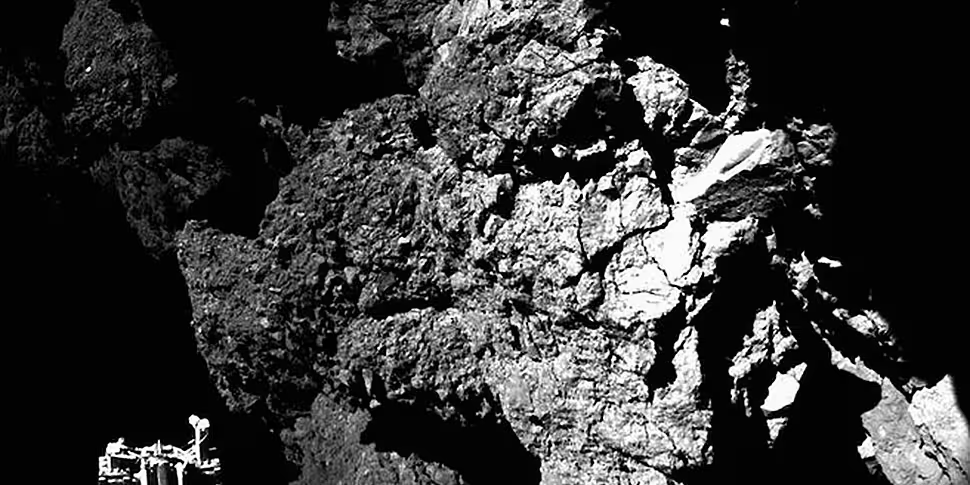Scientists behind the Rosetta mission have re-established contact with the Philae probe, which is believed to be "stable" following fears over its landing.
The probe's CIVA camera has sent back its first image confirming Philae is on the 67P/Churyumov-Gerasimenko comet.
Now that I’m safely on the ground, here is what my new home #67P looks like from where I am. #CometLanding pic.twitter.com/gFmt8Ldvpa
— Philae Lander (@Philae2014) November 13, 2014
However, it is not yet known whether the lander has anchored after its two harpoons "did not shoot" upon touchdown.
As expected, contact was lost overnight but has now been re-established with the probe, which is 300 million miles from Earth.
The landing was described as a "big step for human civilisation" by European Space Agency (ESA) Director-General Jean-Jacques Dordain when it was confirmed on Wednesday afternoon.
The probe has already sent back "plenty of data", according to the agency.
But there is anxiety after it became clear that Philae's two harpoons "did not shoot" as planned, casting doubt over whether the probe has properly anchored.
More will be known when Philae makes scheduled contact with its mothership, Rosetta, on Thursday.
Landing manager Dr Stephan Ulamec said: "We still don't fully understand what has happened. Did we just land in a soft sandbox and everything is fine even though we are not anchored...or is there something else happening?".
"Hopefully we are sitting there on the surface at a position different to the original landing and can continue our science."
The agency is set to hold a news conference this afternoon.
Probe may have bounced on comet
Mission controllers think the probe may have bounced after first coming into contact with the comet, which is travelling at 34,000mph.
Anchoring is necessary because gravity on the comet is 100,000 times weaker than on Earth.
Astrophysicist Philippe Gaudon, who heads the Rosetta mission at French space agency CNES, said it would be difficult for Philae to drill if the probe was not secured.
"However, Philae has not tipped over and seems to be stabilising," Mr Gaudon said.
"And a certain number of instruments are continuing to operate, mainly for measuring temperature, vibration, magnetism and so on."
The harpoon system was supposed to be complemented by a thruster intended to counteract rebound - but scientists became aware before landing that this system was not activating.
Philae is designed to conduct the first-ever scientific experiments on a comet.
It is believed that comets that formed more than four billion years ago could hold the key to how Earth was 'seeded' with water and organic matter, providing the building blocks for life.
The mission was approved in 1993 and Rosetta was hoisted into space carrying Philae in 2004. Confirmation of the successful landing came at 4:03pm Irish time on Wednesday.
ESA operations tweeted: "RECEIPT OF SIGNAL FROM SURFACE European Space Agency receiving signals from @Philae2014 on surface of comet #67P/CG #cometlanding."
RECEIPT OF SIGNAL FROM SURFACE European Space Agency receiving signals from @Philae2014 on surface of comet #67P/CG #cometlanding
— ESA Operations (@esaoperations) November 12, 2014
In the final phase of the mission scientists said they were surprised to find the rock - called 67P/Churyumov-Gerasimenko - was "emitting a song".
The Rosetta Plasma Consortium (RPC) said it believed the comet was releasing particles into space which were becoming electrically charged and causing fluctuations in its magnetic field.
Watch the comet landing here:









